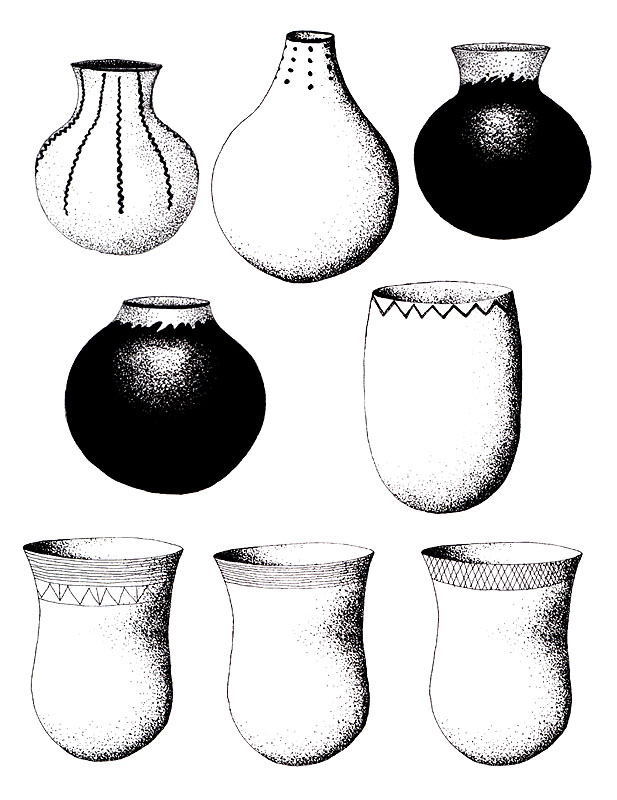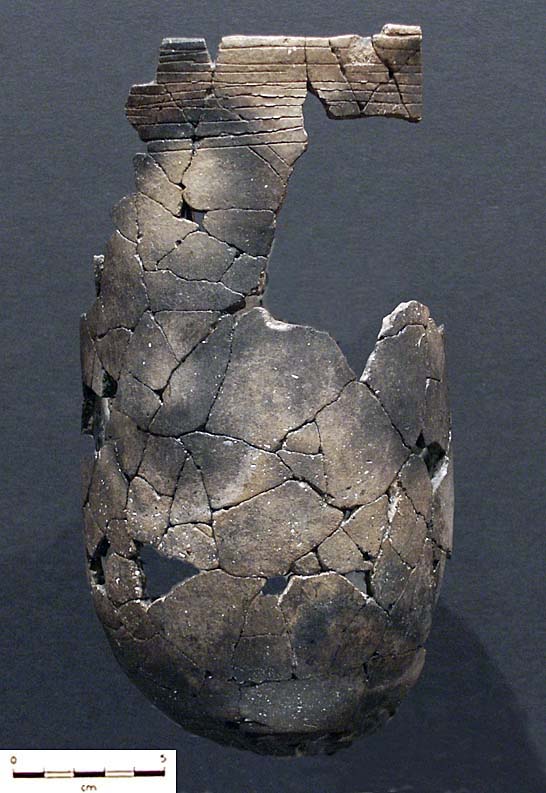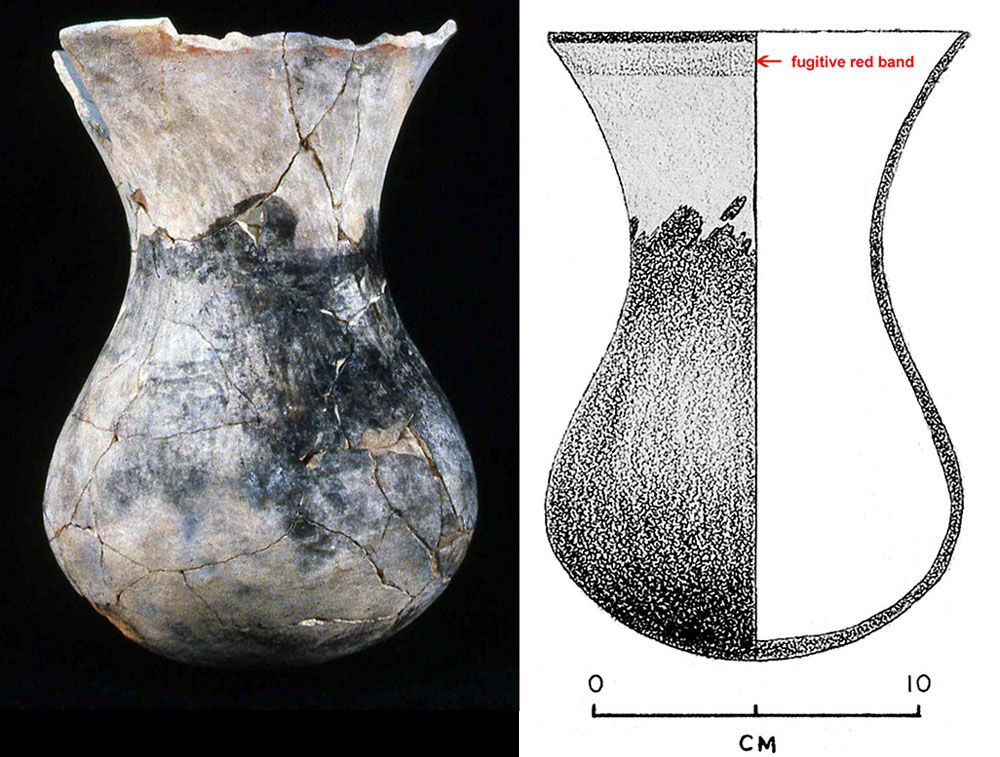Coastal Pottery
Ceramic technology appears earliest on the upper Texas coast, where early pottery types now appear to date to the early centuries B.C. Lawrence Aten, in his seminal study of the culture history of the Galveston Bay area, proposed that the earliest pottery in that area, a form of Tchefuncte ware, closely related to pottery of the same name to the east in Louisiana, was introduced by A.D. 100. More recent excavations at the Eagles Ridge Site (41CH252) near the Trinity River delta produced large numbers of sherds of Tchefuncte pottery in levels radiocarbon dated to as early as around 400 B.C. Ongoing research by Aten and Charles Bollich at Early Ceramic period sites in the Sabine Lake area, such as Black Hill Mound, provides additional evidence of the appearance of Tchefuncte pottery on the upper coast as early as 400-500 BC.
These findings suggest that the Tchefuncte pottery of the upper Texas coast is as old, or nearly as old, as that from Louisiana, further suggesting that the peoples in both areas were closely related and were in more or less continuous communication. Tchefuncte pottery is typically thick-walled with a distinctively convoluted silty clay paste that appears to be poorly wedged (mixed). Modest-sized flat-bottomed jar forms with constricted necks may predominate. Some Tchefuncte vessels are plain, but others are decorated with incised geometric designs, perforated holes, rocker stamping or other techniques of exterior modification. Aten and Bollich observe that Tchefuncte pottery in the Sabine Lake area consistently lacks charring on the exterior or traces of encrusted residue on the interior, suggesting the vessels served for storage, not cooking.
By the early centuries A.D., upper coast pottery began to undergo its own stylistic and technological changes, and pottery assemblages from sites in that region came to be dominated by sandy paste ceramics of the Goose Creek series. Pots were commonly undecorated (Goose Creek Plain), and sometimes adorned with geometric patterns of incised lines (Goose Creek Incised). Vessel forms included jars with rounded or conical bases as well as large bowls; there is ample evidence (charring, residue) that Goose Creek pottery was often used for cooking. The Hopewellian stylistic expressions of the Marksville culture pottery of Louisiana had little if any influence on early Goose Creek ceramics, suggesting a period of relative isolation from eastern influences in the early centuries A.D.
By around A.D. 1000, however, this had changed, and upper coast incised designs came to closely resemble the decorative patterns on the Coles Creek, and slightly later Plaquemine traditions of Louisiana and the Lower Mississippi Valley. After ca. A.D.1000, some upper coast pottery came to be tempered with grog (crushed pottery), a technology presumably borrowed from Louisiana, and this is called Baytown Plain, if undecorated, and San Jacinto Incised, if it bears incised decorations. The decorative motifs on San Jacinto Incised are similar to those on Goose Creek Incised. (See Mitchell Ridge Pottery discussion.)
The recurrent interactions between the people of the upper Texas coast and those to the east in Louisiana is almost certainly also reflected in the cultural geography of Early Historic times. This is expressed in the historical fact that the Akokisa and Bidai Indians of the Galveston Bay area and the adjacent interior shared a common linguistic tradition with the Atakapa Indians of south-central and southwestern Louisiana.
By 1250 A.D. pottery technology had reached in the central coast. Sandy paste wares similar to Goose Creek Plain of the upper coast has been found at site 41JK8 on the lower Lavaca River in association with Scallorn arrow points. The people of the central coast, probably ancestral to the historic Karankawa tribes, were making a distinctive pottery by A.D. 1250-1300. This pottery, known as Rockport ware, is a distinctive trait of the Rockport phase, which has been linked with the Karankawa. It is a thin-walled (especially compared to Goose Creek pottery), sandy paste pottery that is sometime undecorated (Rockport Plain), sometimes with incised decorations (Rockport Incised) almost certainly inspired by upper coast styles, but most frequently coated and/or decorated with asphaltum (Rockport Black-on-gray).
Rockport Black-on-gray decorations consist of narrow bands of asphaltum painted along the rims of pots. In some cases, vertically oriented sets of parallel squiggly lines are added, and these descend along the outside of jars and ollas (narrow-mouth vessels). Interiors of these pots were often coated with asphaltum, perhaps as a sealant, and exteriors were sometimes partially or completely coated, as well.
Richard Weinstein and Michelle Hutchins recently analyzed and classified the largest known single-site collection of Rockport pottery—almost 43,000 sherds—from the Guadalupe Bay site. They used the type-variety ceramic classification system to define three new types (Rockport Black, Rockport Red, and Rockport Polychrome) as well as numerous varieties and decorative motifs. (See Rockport Pottery and Decorative Motifs Gallery sections of the Guadalupe Bay exhibit.) Rare examples of Rockport Polychrome also have been recognized elsewhere, with red and black designs created by asphaltum paint and a thin red ochre paint.
In late times, 1400-1500 A.D., Karankawa potters occasionally created more finely made decorated pottery by adding a white or grayish white slip on the vessel exterior on top of which asphaltum paint was added, creating an attractive Black-on-white ware. The nearest parallel is the Late Postclassic black-on-white pottery of the Huasteca culture on the Gulf coast of northeastern Mexico. And even though the design elements are not the same, it is possible that the decorative technology diffused from the northeastern margin of Mesoamerica to the central Texas coast.
Rockport pottery is typically a central coast phenomenon, as it is commonly found from Matagorday Bay in the north to the northern shore of Baffin Bay, some 150 kilometers to the south. It is occasionally found inland, although not very far (30-40 miles) in prehistoric times. As such, its distribution is essentially the same as the known range of the Early Historic Karankawa tribes. The fact that Rockport pottery is found in abundance at the sites of Spanish Colonial missions and presidios where Karankawas are known to have been the primary Indian residents (such as the missions of Nuestra Señora del Rosario and Nuestra Señora del Refugio, and the earliest location of Presidio La Bahia) further supports the linkage of this pottery, and the Rockport Phase, with the Karankawa Indians of Colonial times.
No indigenous pottery has been found at sites on the lower Texas coast, where it was never locally produced. Occasional examples of actual Postclassic Huastecan ceramics have been found in the Rio Grande delta area, where pots arrived via trade between local Late Prehistoric populations and the Huastecan people living along the coastal plain in the northeasternmost section of Mesoamerica. It is thought that the local Rio Grande delta folk may have exchanged shell ornaments for pots and perhaps other items, such as jadeite ornaments that have been found, albeit very rarely, at sites of the Brownsville Complex.
Contributed by Robert A. Ricklis.
Sources
Aten, Lawrence E.
1983 Indians of the Upper Texas Coast. Academic Press, New York.
Aten, Lawrence E. and Charles N. Bollich
2004 Archeological Reconnaissance at Black Hill Mound (41JF24), Jefferson County, Texas. Research report in fulfillment of Texas Antiquities Committee Archeology Permit No. 2902, Texas Historical Commission, Austin.
Ricklis, Robert A.
1996 The Karankawa Indians of the Texas Coast: An Ecological Study of Cultural Tradition and Change. University of Texas Press, Austin.
Ricklis, Robert A. and Richard A. Weinstein
2005 Sea-Level Rise and Fluctuation on the Central Texas Coast: Exploring Cultural and Ecological Correlates. In: Nancy Marie White, editor, Gulf Coast Archaeology: The Southeastern United States and Mexico. University of Florida Press.
Weinstein, Richard A.
1991 Lido Harbor (41 GV 82): A Late Prehistoric Campsite and Extraction Locale, Galveston County, Texas. Coastal Environments, Inc. Submitted to Galveston District, U.S. Army Corps of Engineers.
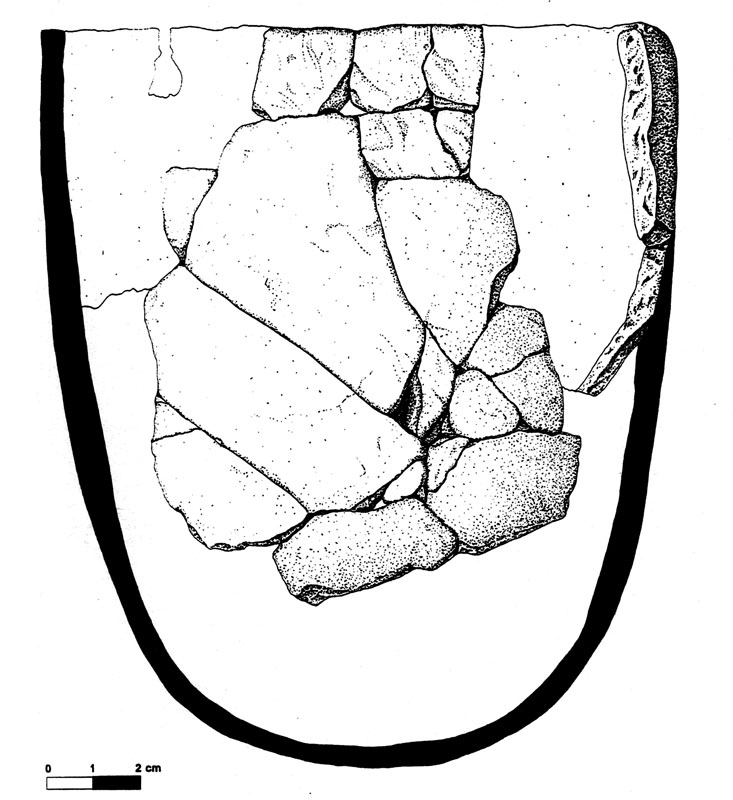
|
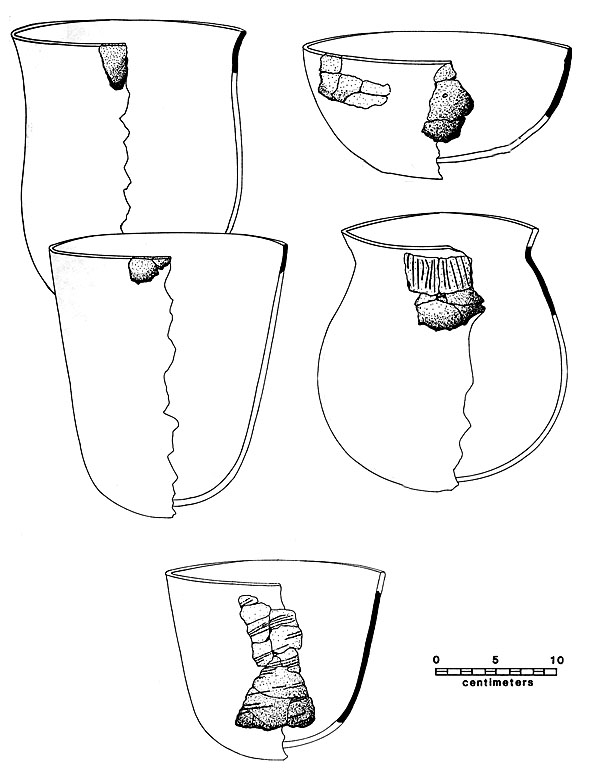
|
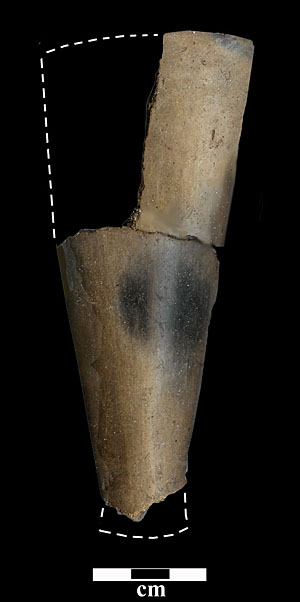
Rockport Plain ceramic pipe with burnished exterior. Such forms are unusual and the surface finish is reminiscent of Toyah pottery found in the South Texas Plains. From the Ingleside Cove site, 41SP120, photo by Robert Ricklis.
|
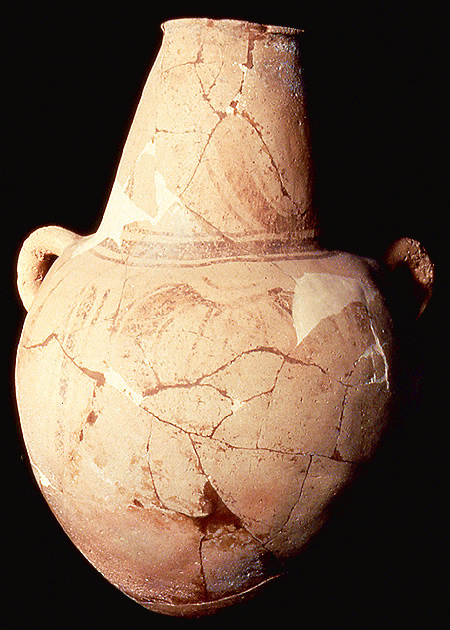
Large Huasteca water jar found in Cameron County in the Rio Grande delta by A.E. Anderson in the early 20th century. This restored vessel and a few other sherds of Huasteca pottery found at other sites in the area are thought to be trade vessels probably linked to shell ornament production in the Rio Grande delta.
|

